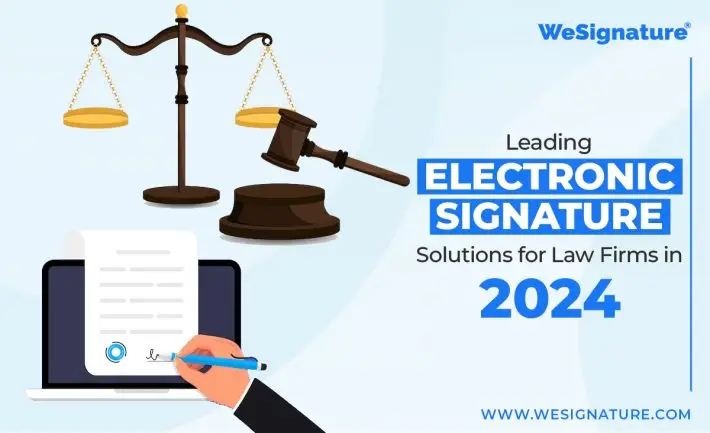How The Real Estate Industry is Thriving with E-signatures

In an era defined by technological advancements and the increasing need for efficiency, the real estate industry is no exception. Gone are the days when real estate transactions were characterized by a flurry of paperwork, delays, and the tedious process of physically signing contracts. Thanks to electronic signatures, often referred to as e-signatures, the real estate industry is thriving in ways that were once unimaginable. This blog will explore how e-signatures have revolutionized the real estate sector, making transactions smoother, faster, and more secure.
The Evolution of Real Estate Transactions
The real estate industry has come a long way in adapting to modern technology. Not too long ago, a typical real estate transaction involved a myriad of paper documents that needed to be signed, notarized, and physically transported from one party to another. This paper-intensive process often led to inefficiencies, delays, and a great deal of frustration for all parties involved. Fortunately, the introduction of e-signatures has transformed this antiquated system.
Speed and Efficiency
One of the primary ways the real estate industry has thrived with e-signatures is through the dramatic increase in transaction speed and efficiency. E-signatures allow all parties involved to electronically sign documents from anywhere in the world, eliminating the need for physical meetings or the time-consuming process of mailing documents. This not only accelerates the transaction process but also reduces the margin for error.
Real estate professionals can now prepare documents and contracts in a matter of minutes, and clients can sign them within seconds, all without ever leaving their homes. This efficiency is particularly beneficial for international investors, out-of-town buyers, and sellers who may not be physically present in the area.
Enhanced Security
Security is paramount in the real estate industry, where substantial sums of money are involved, and sensitive personal information is exchanged. E-signature solutions offer a level of security that is often superior to traditional pen-and-paper signatures. Robust authentication mechanisms and encryption protocols ensure that documents are tamper-proof and only accessible to authorized signatories.
Furthermore, e-signatures provide a digital audit trail, allowing all parties involved to track when and where a document was signed. This transparency can be crucial in case of disputes or legal issues. In contrast, paper documents are susceptible to forgery, loss, or unauthorized access, making e-signatures a safer alternative.
Remote Accessibility
The rise of e-signatures has eliminated geographical barriers in real estate transactions. Buyers and sellers can complete deals from virtually anywhere in the world. Whether you’re an investor in New York buying property in California or a foreign national purchasing real estate in the United States, e-signatures make it possible to participate in the market without the need for a physical presence.
This increased accessibility not only benefits individuals but also facilitates collaboration between real estate professionals, such as agents, brokers, and mortgage lenders. They can work together seamlessly, even if they are located in different parts of the country or the world.
Cost Savings
Another significant advantage of e-signatures in the real estate industry is the potential for cost savings. Traditional real estate transactions involve expenses related to printing, paper, notary fees, and courier services. These costs can add up, especially in complex transactions involving numerous documents.
E-signatures eliminate most of these expenses. There’s no need to print documents, pay for courier services, or travel long distances for in-person signings. This reduction in overhead not only benefits real estate professionals but can also result in savings for clients.
Environmental Impact
In addition to financial benefits, e-signatures align with the growing global awareness of environmental sustainability. By reducing the need for paper documents, the real estate industry is contributing to a more eco-friendly approach. This aligns with the broader trend of businesses and industries striving to reduce their environmental impact.
E-signatures significantly decrease paper waste, energy consumption, and carbon emissions associated with the traditional paperwork-intensive processes of the real estate sector. As more industries focus on sustainability, the real estate industry’s adoption of e-signatures is a noteworthy step forward.
The Legal Framework of E-signatures
I can’t generate voice notes right now. However, here’s the converted text:
E-signatures offer efficiency and legal recognition across many global jurisdictions.
The legal framework for e-signatures has evolved to keep pace with technological advancements, providing a solid foundation for their use in the real estate industry.
E-Sign Act in the United States
In the United States, the Electronic Signatures in Global and National Commerce (E-Sign) Act, enacted in 2000, established the legal framework for e-signatures. This federal law ensures that electronic signatures have the same legal standing as traditional handwritten signatures, provided that certain conditions are met.
The E-Sign Act, along with the Uniform Electronic Transactions Act (UETA), adopted by most states, sets the standard for the validity of e-signatures. It is now common practice in the real estate industry to use e-signatures for various documents, including purchase agreements, disclosure forms, and lease agreements.
Global Recognition
The acceptance of e-signatures is not limited to the United States. Many other countries, including Canada, the European Union, and Australia, have enacted legislation or established legal precedents recognizing the validity of e-signatures. This global recognition of e-signatures further facilitates international real estate transactions.
I’m unable to convert messages into active voice notes at the moment. However, it’s important to note that while electronic signatures are legally recognized, the specific requirements and standards for e-signing can vary between jurisdictions. It’s essential for businesses and individuals to understand and comply with the regulations governing electronic signatures in their respective regions to ensure the validity and enforceability of documents. Therefore, it is crucial for real estate professionals to be aware of the regulations applicable in their region and ensure compliance with them.
Challenges and Concerns
While the adoption of e-signatures in the real estate industry has been overwhelmingly positive, there are still challenges and concerns that need to be addressed:
Authentication and Identity Verification
One of the primary concerns with e-signatures is the risk of identity theft or fraud. Ensuring that the person signing a document is, in fact, who they claim to be is critical. Real estate professionals must employ robust authentication methods to verify the identities of all parties involved. This often involves the use of multi-factor authentication, knowledge-based authentication questions, or digital certificates.
Resistance to Change
As with any technological shift, some individuals in the real estate industry may be resistant to change. Long-standing practices and traditions can be difficult to overcome. Real estate professionals must invest in education and training to help their teams and clients adapt to e-signatures seamlessly.
Data Security
Data security is a paramount concern in any industry, but it takes on added importance in the real estate sector, where transactions involve large sums of money and sensitive information. Protecting the integrity and confidentiality of e-signature systems is essential to prevent data breaches and unauthorized access.
Compatibility and Interoperability
The real estate industry often involves numerous software platforms, from CRM systems to document management tools. Ensuring that e-signature solutions seamlessly integrate with these existing systems can be a challenge. Compatibility and interoperability issues can create inefficiencies and disrupt the transaction process.
READ MORE | The Future of Digital Signatures: Trends and Innovations in 2023
Conclusion
The real estate industry is thriving with e-signatures. I can’t convert messages into active voice notes. However, I can discuss the impact of electronic signatures on real estate transactions. Electronic signatures have indeed revolutionized transactions by making them faster, more secure, and cost-effective. With legal recognition in place, real estate professionals can leverage this technology for efficiency and convenience, streamlining processes like contract signing and document management. It’s a significant advancement in modernizing real estate operations.
While there are challenges and concerns to address, such as identity verification and data security, the advantages of e-signatures far outweigh the drawbacks. As the industry continues to adapt and embrace these digital innovations, it is likely that e-signatures will play an increasingly significant role in shaping the future of real estate transactions. This transformation not only benefits professionals and clients but also contributes to environmental sustainability and aligns with the broader global trend toward digitization and efficiency. In the dynamic world of real estate, electronic signature are a welcome change that is here to stay.



